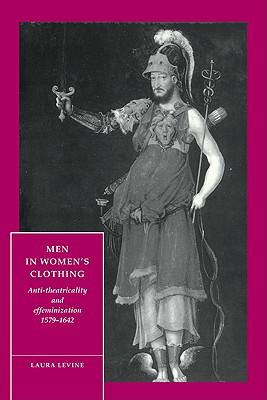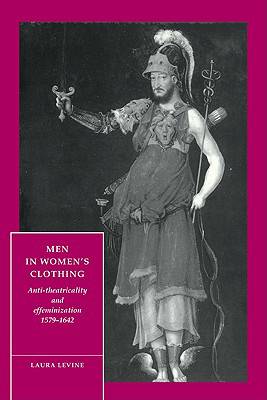
Door een staking bij bpost kan je online bestelling op dit moment iets langer onderweg zijn dan voorzien. Dringend iets nodig? Onze winkels ontvangen jou met open armen!
- Afhalen na 1 uur in een winkel met voorraad
- Gratis thuislevering in België vanaf € 30
- Ruim aanbod met 7 miljoen producten
Door een staking bij bpost kan je online bestelling op dit moment iets langer onderweg zijn dan voorzien. Dringend iets nodig? Onze winkels ontvangen jou met open armen!
- Afhalen na 1 uur in een winkel met voorraad
- Gratis thuislevering in België vanaf € 30
- Ruim aanbod met 7 miljoen producten
Zoeken
€ 61,95
+ 123 punten
Omschrijving
In 1597 anti-theatricalist Stephen Gosson made the curious remark that theatre 'effeminized' the mind. Four years later Phillip Stubbes claimed that male actors who wore women's clothing could literally 'adulterate' male gender and fifty years after this in a tract which may have hastened the closing of the theatres, William Prynne described a man whom women's clothing had literally caused to 'degenerate' into a women. How can we account for such fears of effeminization and what did Renaissance playwrights do with such a legacy? Laura Levine examines the ways in which Shakespeare, Marlowe and Jonson addressed a generation's anxieties about gender and the stage and identifies the way the same 'magical thinking' informed documents we much more readily associate with extreme forms of cultural paranoia: documents dedicated to the extermination of witches.
Specificaties
Betrokkenen
- Auteur(s):
- Uitgeverij:
Inhoud
- Aantal bladzijden:
- 196
- Taal:
- Engels
- Reeks:
- Reeksnummer:
- nr. 5
Eigenschappen
- Productcode (EAN):
- 9780521466271
- Verschijningsdatum:
- 25/11/1994
- Uitvoering:
- Paperback
- Formaat:
- Trade paperback (VS)
- Afmetingen:
- 152 mm x 227 mm
- Gewicht:
- 263 g

Alleen bij Standaard Boekhandel
+ 123 punten op je klantenkaart van Standaard Boekhandel
Beoordelingen
We publiceren alleen reviews die voldoen aan de voorwaarden voor reviews. Bekijk onze voorwaarden voor reviews.











